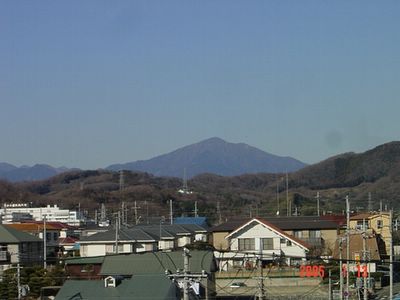Saturday, July 02, 2005
Mt. Oyama's fifth anniversary since its last eruption

Mt. Oyama's last volcanic eruption happened five years ago.

Sunday will mark the fifth anniversary since the start of volcanic eruptions of Mt. Oyama on Miyakejima island, Tokyo. The eruptions resulted in the evacuation of all the island's inhabitants for more than four years.
With the evacuation order lifted in February and the island reopened to tourists in May, residents have been steadily rebuilding their lives.
However, with the continuous emission of large amounts of poisonous volcanic gas, evacuees from areas with high concentrations of the gas are still spending restless days without permission to return to their own homes.
Residents of the Tsubota area, which is polluted by high concentrations of gas, still have not been allowed to move back into their homes.
A resident wrote a message on a wall of a house facing a road in the area, reading: "We can't hold on anymore!! SOS."
The message was written in November by Yoko Hiyama, a 43-year-old hairdresser temporarily living in Ota Ward, Tokyo, after evacuating the house.
A family member suggested Hiyama write something on the wall after repainting it during a brief visit to the house.
While happy that residents finally were to start returning to the island, she again realized those in her area were still unable to return home. Wondering what would happen to her future life, she wrote the message on the wall to express her anxiety.
Many islanders have seen the message and some were pleased with it, saying it mirrored their own feelings. However, Hiyama was later worried that what she wrote on the wall might have been perceived as being negative as residents were preparing their return to the island.
She eventually decided she would erase the message, but when she went back home briefly Monday, she could not help writing the second message beside it on the wall.
The message can be translated into English as, "Fresh leaves of spring/The sky over the sea in summer/The sunset in autumn/And the west wind in winter/Are on the island/Residents smile together/But we are not allowed to live or die here."
While the islanders who returned home have been working to reconstruct their lives, residents of areas with high levels of volcanic gas have to remain in temporary housing even after returning to the island.
The islanders' hardship began on June 26, 2000, when the Meteorological Agency issued an emergency volcanic alert to warn of a possible eruption on Mt. Oyama.
The mountain later erupted several times and in September, evacuation directives were issued to the residents.
The volcano spewed out 40,000 to 50,000 tons of volcanic gas per day at that time. It now releases between 2,000 to 5,000 tons per day.
On some days on the volcanic island of Sakurajima, Kagoshima Prefecture, up to 2,000 tons of gas are emitted, a figure considered high. Using this as a comparison, the emissions on Miyakejima island are still considered to be high.
The agency's Coordinating Committee for the Prediction of Volcanic Eruptions announced Tuesday that high gas emissions would continue for a while.
On Friday, an alarm was issued in the areas with high concentrations of volcanic gas.
As of Tuesday, 1,714 people who used to live in 993 households on the island have submitted forms to confirm their intention to return to the island. So far, more than half of all the residents of Miyakemura are believed to have returned.
However, the residents who used to live in the areas with high levels of volcanic gas are only allowed to stay there for four hours a day.
One-third of about 300 people from 150 households who cannot return to the areas moved to temporary housing, such as those provided by the Miyakemura municipal government.
However, many residents of the areas are said to have postponed returning to the island because they cannot live in their own homes.
The islanders, who have been exempt from rent for temporary residences at apartment houses run by the metropolitan government, will have to start paying for them from August. They also will be required to transfer residence certificates to homes where they are currently living.
One woman whose house is in one of the areas with high concentrations of volcanic gas said: "This isn't our fault that we can't go home. I'm so sad feeling that we've been forsaken."